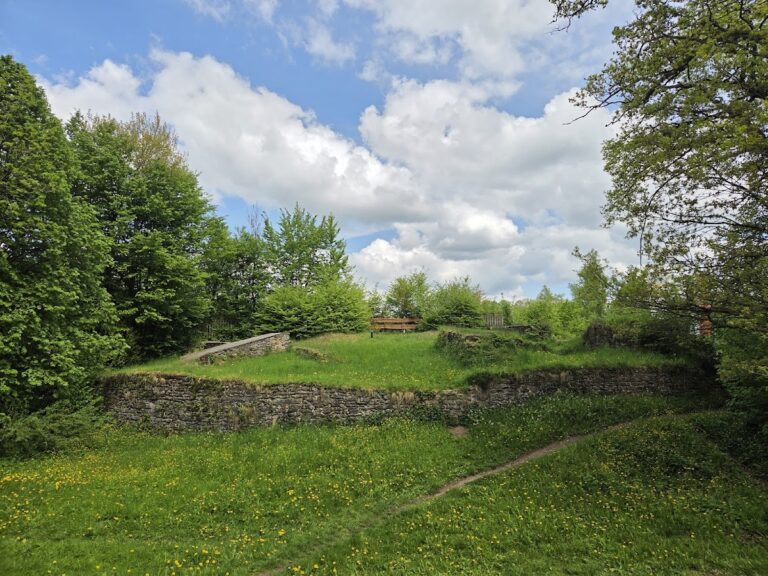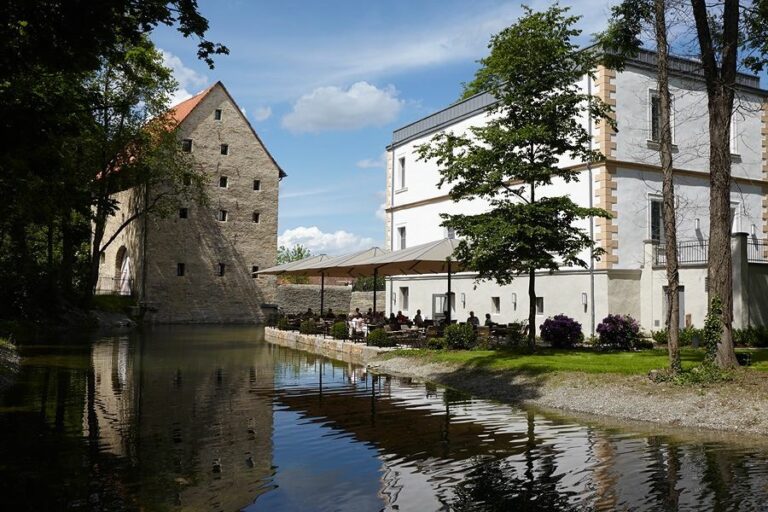Stesser Burg: An Iron Age and Medieval Ringfort in Meschede, Germany
Visitor Information
Google Rating: 3.8
Popularity: Very Low
Google Maps: View on Google Maps
Country: Germany
Civilization: Unclassified
Remains: Military
History
Stesser Burg is a ringfort situated in the municipality of Meschede, Germany, originally constructed by Iron Age communities inhabiting the region. Its strategic position on a wooded hill near the Ruhr River marks it as an early fortified settlement.
The earliest phase of Stesser Burg dates back to the late Iron Age, possibly as far as the 3rd century BCE. Archaeological finds include a decorated fragment of an arm ring, which closely resembles similar objects found at other known Celtic sites, indicating early local craftsmanship and cultural connections during this period. A gold-blass coin, made from a mixture of gold, silver, and copper, from the mid-1st century BCE suggests ongoing occupation throughout the La Tène culture era, a phase of Celtic material culture notable in Central Europe.
Following this initial period, Stesser Burg experienced a second stage of settlement during the Early Middle Ages, around the late 7th century CE. This phase is evidenced by discoveries such as a gold fibula with equal-armed decorations and a gold tremissis coin from the Merovingian period, underlining the site’s sustained importance well into the early medieval era.
A third phase of use is identified between the 10th and 14th centuries, spanning the High and Late Middle Ages. Ceramic fragments from this time indicate the fort’s continued occupation or reuse. During this medieval period, additional earthworks seen to the southeast of the main enclosure may have served as an outer bailey, a type of fortified courtyard associated with medieval fortifications, pointing to adaptations aligned with the defensive needs of the time.
Recognizing its historical significance, the city of Meschede officially designated Stesser Burg as a protected monument in 1984. Subsequent archaeological surveys, including metal detector investigations conducted in 2014 by the LWL Archaeology for Westphalia, have confirmed the site’s origins as a late Iron Age fortification with multiple distinct phases of human activity throughout its long history.
Remains
The ringfort of Stesser Burg occupies the entire summit of a hill measuring approximately 2.4 hectares, enclosed by a continuous defensive wall that follows the ridge’s natural contours. This outer wall represents the main fortification, encircling the area to protect its inhabitants over the centuries.
In the southern portion of the site, a series of terraces, ramparts, and ditches stand in front of the primary wall, suggesting complex defensive arrangements and possibly different construction phases. Notably, two of the southern ramparts are curved, an architectural feature which points to an earlier phase within the fort’s long development, differentiating them from later straight ramparts.
Inside the enclosure, four additional ramparts divide the interior space, creating distinct sections within the fort’s boundaries. These internal earthworks demonstrate a sophisticated approach to defense and possibly organization of living or working areas within the fort.
Though no gates have been definitively identified by archaeological excavation, digital terrain models reveal potential entrance points on the western side, corresponding with the current access path to the site. Additional possible breaks in the ramparts exist to the north and east, offering clues to how entry might have been arranged.
Material remains found on site include fragments of pottery dating back to the Iron Age, embedded within the rampart structures, alongside ceramic shards from various medieval periods. These artifacts not only confirm the occupation phases but also offer insights into the everyday activities and cultural influences across centuries.
Vegetation today mainly consists of beech forest that covers the site, contributing to the preservation of the earthworks by limiting soil erosion and human disturbance. Positioned within a protected natural area, Stesser Burg’s surviving ramparts and ditches remain visible in situ, offering a tangible link to its layered past.







